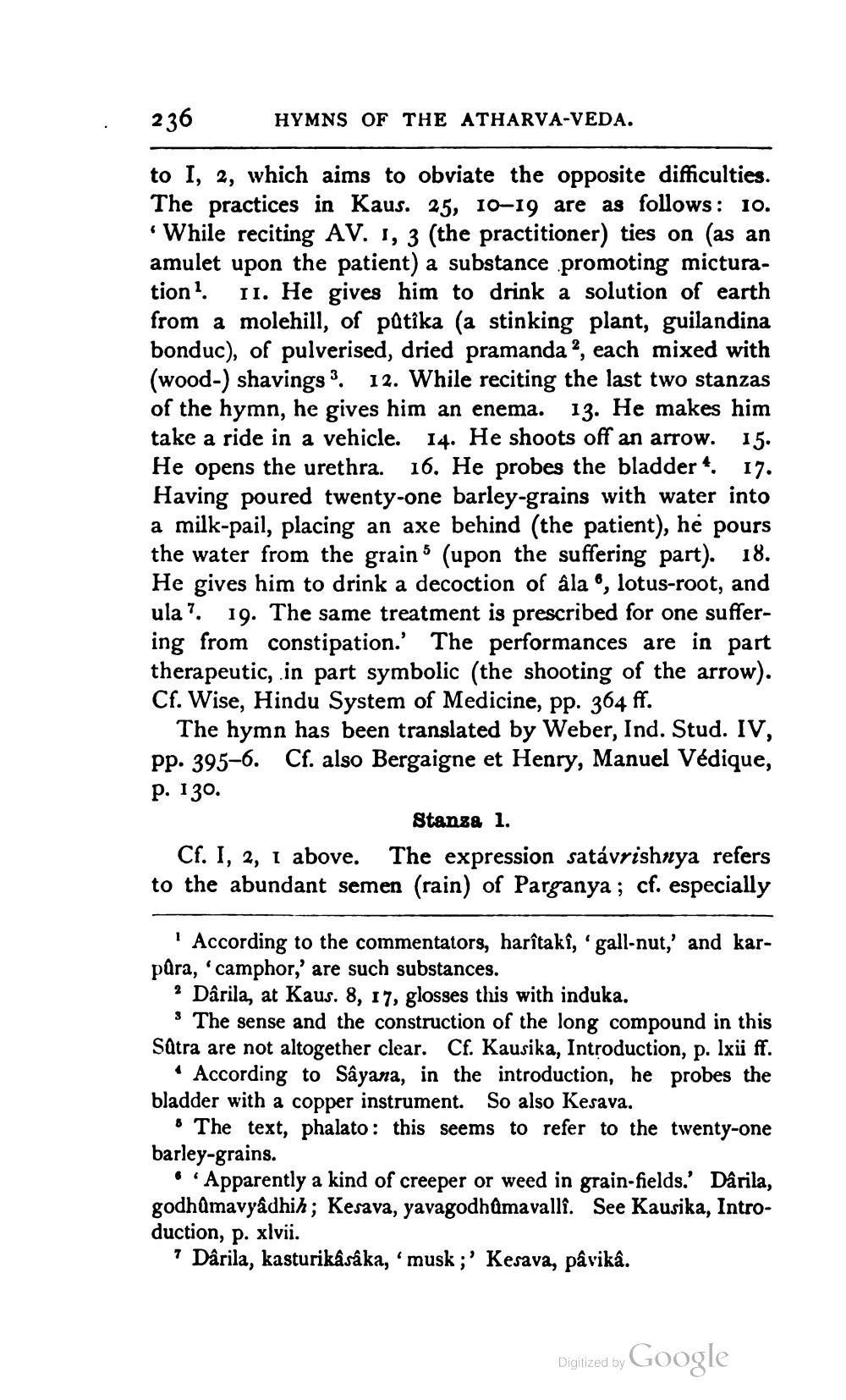________________
236
HYMNS OF THE ATHARVA-VEDA.
to I, 2, which aims to obviate the opposite difficulties. The practices in Kaus. 25, 10-19 are as follows: 10. While reciting AV. 1, 3 (the practitioner) ties on (as an amulet upon the patient) a substance .promoting micturation? II. He gives him to drink a solution of earth from a molehill, of patika (a stinking plant, guilandina bonduc), of pulverised, dried pramanda?, each mixed with (wood-) shavings 3. 12. While reciting the last two stanzas of the hymn, he gives him an enema. 13. He makes him take a ride in a vehicle. 14. He shoots off an arrow. 15. He opens the urethra. 16. He probes the bladder 4. 17. Having poured twenty-one barley-grains with water into a milk-pail, placing an axe behind (the patient), he pours the water from the grains (upon the suffering part). 18. He gives him to drink a decoction of ala , lotus-root, and ula?. 19. The same treatment is prescribed for one suffering from constipation.' The performances are in part therapeutic, in part symbolic (the shooting of the arrow). Cf. Wise, Hindu System of Medicine, pp. 364 ff.
The hymn has been translated by Weber, Ind. Stud. IV, pp. 395–6. Cf. also Bergaigne et Henry, Manuel Védique, p. 130.
Stanse 1. Cf. I, 2, 1 above. The expression satávrishnya refers to the abundant semen (rain) of Parganya ; cf. especially
According to the commentators, harîtakî, 'gall-nut,' and karpära, camphor,' are such substances. ? Dârila, at Kaus. 8, 17, glosses this with induka.
e sense and the construction of the long compound in this Sätra are not altogether clear. Cf. Kausika, Introduction, p. Ixii ff.
• According to Sâyana, in the introduction, he probes the bladder with a copper instrument. So also Kesava.
• The text, phalato: this seems to refer to the twenty-one barley-grains.
& Apparently a kind of creeper or weed in grain-fields.' Darila, godhamavyâdhih; Kesava, yavagodhamavalli. See Kausika, Introduction, p. xlvii.
? Dârila, kasturikâsâka, ‘musk;' Kesava, pâvika.
Digitized by Google




